Excerpts from Jim Conrad's
Naturalist Newsletter
Entry from field notes dated June 29, 2023, taken along one-lane gravel road in valley between Puerto del Zenthé and Chavarrías in mountainous area with a maze of roads too complex to say how to get there; in general it's in the mountains of east-central Querétaro state, municipality of Cadereyta de Montes, 12 straight-line kms due east of Vizarrón de Montes but much farther by twisting roads; juniper-scrub forest; limestone bedrock; elevation ~2860m (~9400 ft), Querétaro, MÉXICO, (N20.84122°, W99.60509°)
"HIDALGO SNAKEROOT"
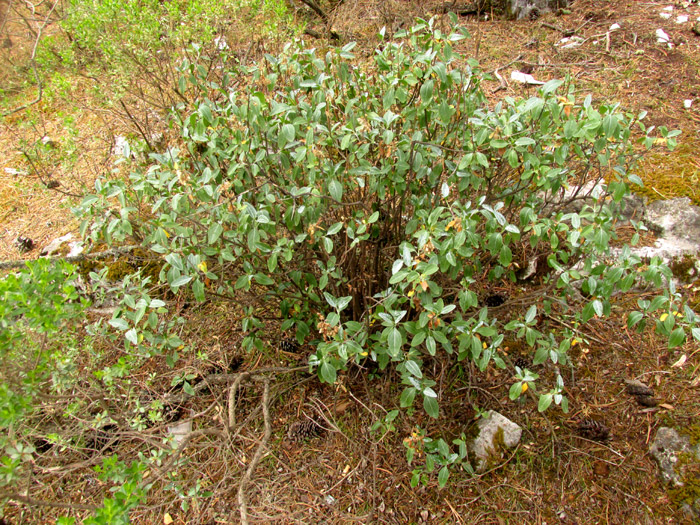
In a semi-open spot on thin soil surrounded mostly by junipers and sometimes grazed by roaming cattle, the above much-branched, woody shrub a bit over a meter tall (4ft) caught my eye with its irregularly whitened leaves.
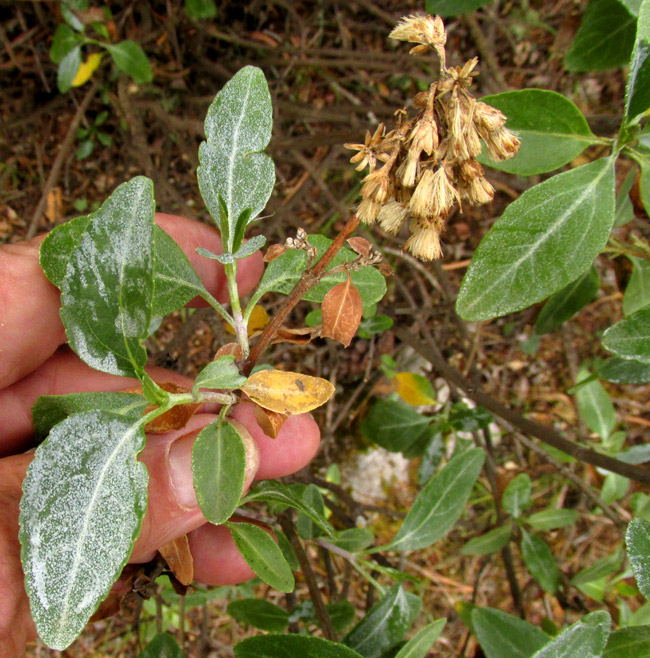
Up closer, it looked as if a heavy white frost covered certain leaves and was beginning to melt -- though frost at this season was out of the question. The bush's flowering had passed, but at the tips of a few stems there were several light brown clusters of dried-out flowering heads. Each head comprised numerous one-seeded fruits topped with tufts of long, slender hairs or bristles, which served as the fruit's parachutes during breezes. Such arrangement of tiny, one-seeded fruits in such heads, or capitula, made clear that the shrub was a member of the enormous Composite/Aster/Sunflower Family, the Asteraceae.
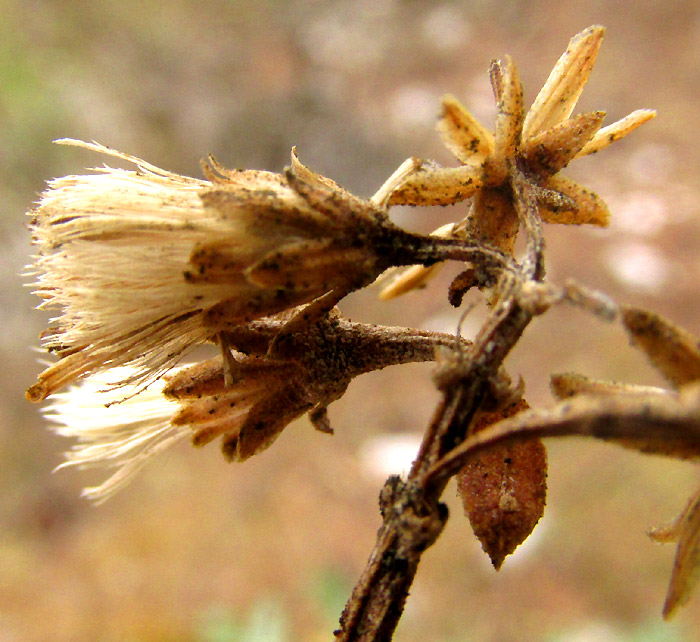
Simply because the Aster Family embraces so many genera and species, it can be hard to identify the species. The above shows some important field marks. Brown, scale-like bracts unite to form bowl-like involucres from which numerous bristle-topped, cypsela-type fruits arise. The involucre's scales are all of more or less the same size, and partially overlap their neighbors in two or three series. Scale tips tend to bend away from the involucre, and each scale is covered with dark, irregularly arranged dots, which are glands.
In the above photo, note that on the sides of the topmost bristles, short, slender protuberances are visible. The bristles, then, are not "simple," but rather like very slender feathers; they're "barbellulate." On the stalk at the bottom of the above picture you can see that the dots form warty glandular bumps. Often such glands contain oil with chemical compounds which repel the plant's enemies, and that might explain how the bush survives with so many cattle roaming around.
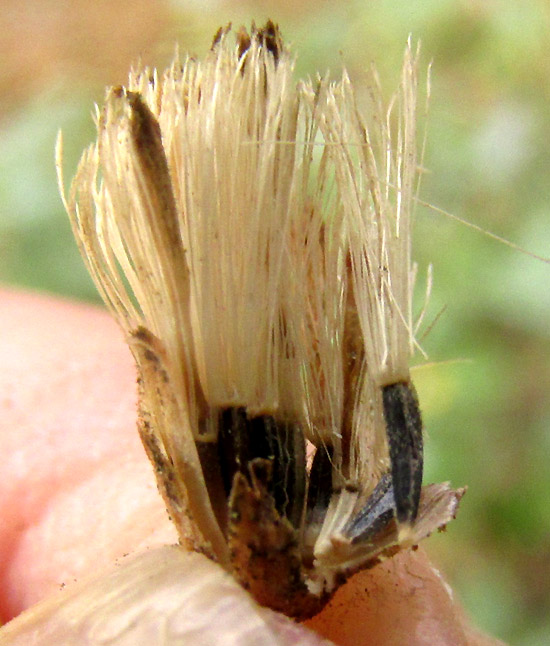
Above it's seen that no scale-like paleae separate the black cypsela-type fruits from one another. The cypselae bear six or more longitudinal ribs, and the hairlike bristles atop them, forming the fruit's pappus, number well more than fifteen. Also, the pappus bristles are not the usual white, but rather an off-white dun color. Note that four or five dried-out corollas remaining among the pappi rise slightly above the pappi -- an important field mark.
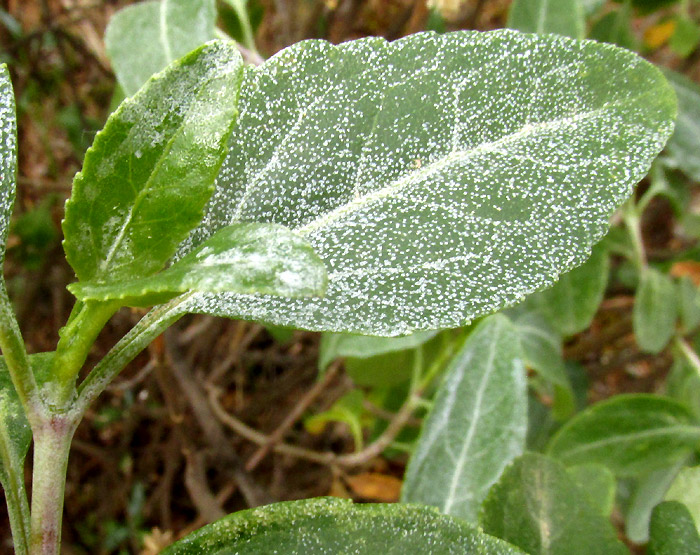
Leaf tips are rounded, not coming to a sharp point. Blade margins are indented with very low teeth, and each tooth is tipped with a gland-like tip. The white speckling seems to develop only on older leaves.
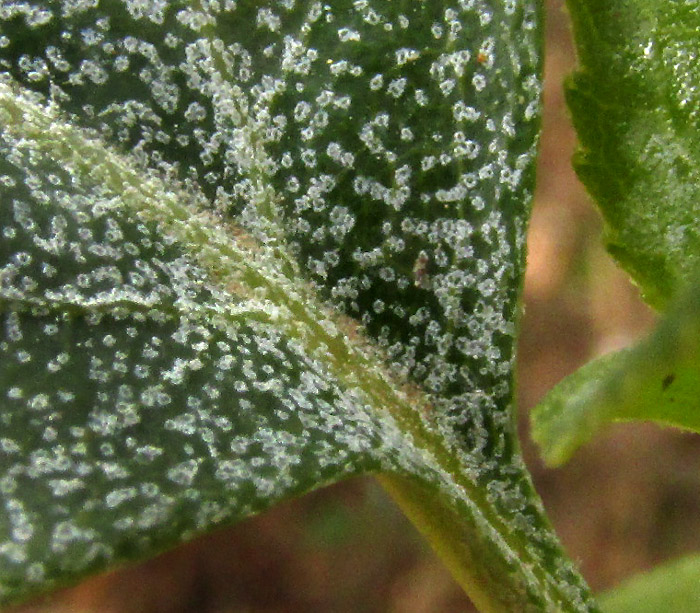
Up close the white speckles are better seen, but still hard to interpret.
The Flora Fanerogámica del Valle de México by Graciela Canderón de Rzedowski and Jerzy Rzedowski, which treats plants of Mexico's Central Valley -- with Mexico City at its heart -- treats most plant species occurring in our mountains rising to the north of the Valley. In that work our bush keyed out to Eupatorium hidalgense. Years after the publication of the Flora, our plant was shifted to the genus Ageratina, so now it's known as AGERATINA HIDALGENSIS.
Ageratina hidalgensis is endemic just the uplands of east-central Mexico, mainly here in northern Querétaro state and Hidalgo state; Hidalgo's border lies only about 12 straight-line kilometers due east of our location. This plant is a "narrow endemic," one I'm very pleased to meet and find in such apparently good health. It bears no English name, but often species of the genus Ageratina are called snakeroots, a name shared with numerous other species traditionally thought to cure snakebites. Thus we can call our bush a snakeroot. Since the species name is hidalgensis, "Hidalgo Snakeroot" suggests itself, but only to be used with quotation marks, since no one else seems to use it.
At this writing, Ageratina hidalgensis is poorly represented on the Internet, though several herbarium sheets of dried specimens appear online. My close comparison of features of those collections with those of our plant provided the confidence needed to claim that I'd found this rare species.
No information about this plant's traditional uses can be found, though with such conspicuous glands it's likely to contain compounds that in more widespread plants would bring fame as of medicinal value. The closely related Ageratina pichinchensis, also found in this area, is well known as a treatment for skin fungal diseases. Another closely related plant, Ageratina glabrata, also found here, is widely used in traditional medicine as an analgesic, a pain reliever, and lab tests confirm the extracts' analgesic effect (Guadalupe García P. et al, 2011). Both of these species are endemic just to Mexico. A quick Internet search finds numerous similar medicinal uses of various Ageratina species.
Entry from field notes dated July 1, 2023, taken along road between El Campamento and El Doctor in mountains of east-central Querétaro state, municipality of Cadereyta de Montes, about 12 straight-line kms due east of Vizarrón de Montes but much farther by twisting roads; elevation ~2500m (~8200 ft), Querétaro, MÉXICO, (N20.87663°, W99.61187°)
AGERATINA HIDALGENSIS IN FLOWER
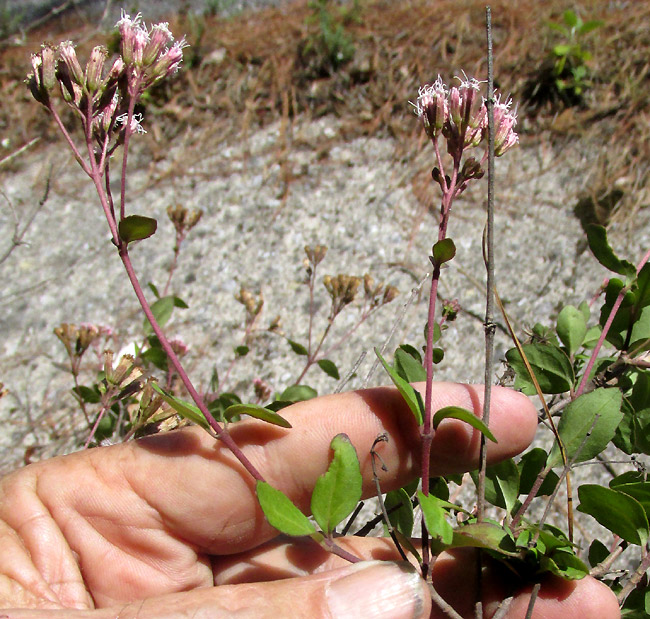
Two days later Ageratina hidalgensis turns up again, now lower in elevation, and flowering, as seen above. This plant grows in a more exposed spot on a steep, rocky slope along the road.
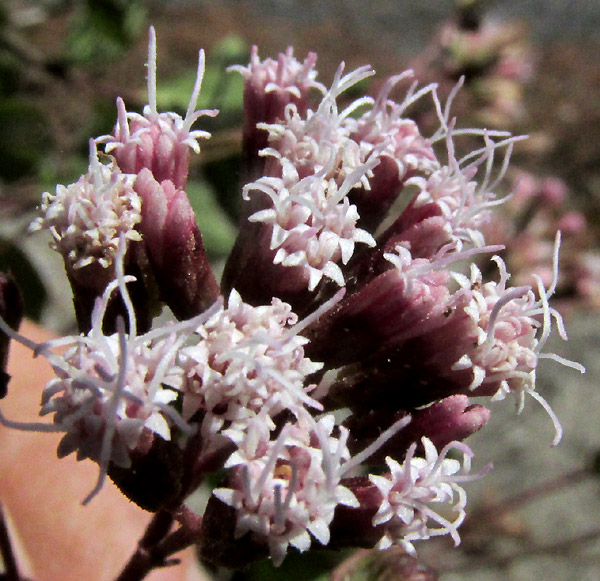
Now it's to be seen that the florets' style arms are particularly long. Capitula produce on the average seven or eight florets.
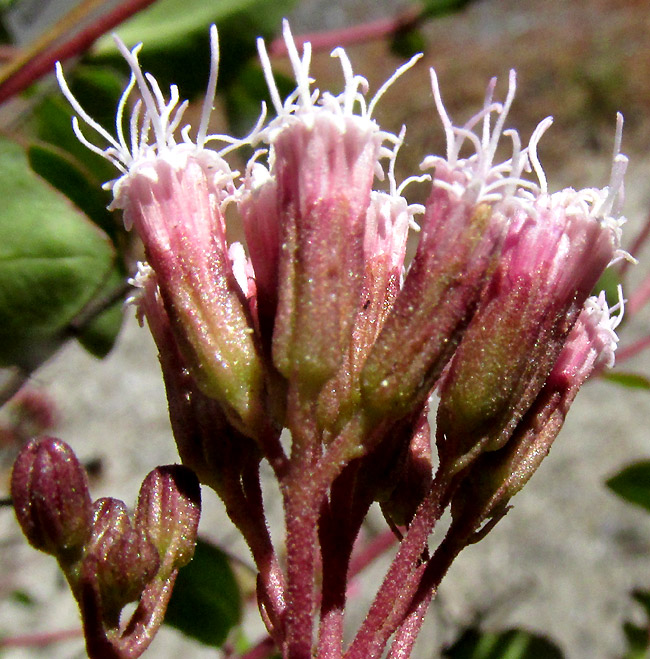
While corolla lobes are white, corolla tubes, involucral bracts and panicle branches are all suffused with raspberry color, not seen on the earlier plant. Involucral bracts are all of similar heights.
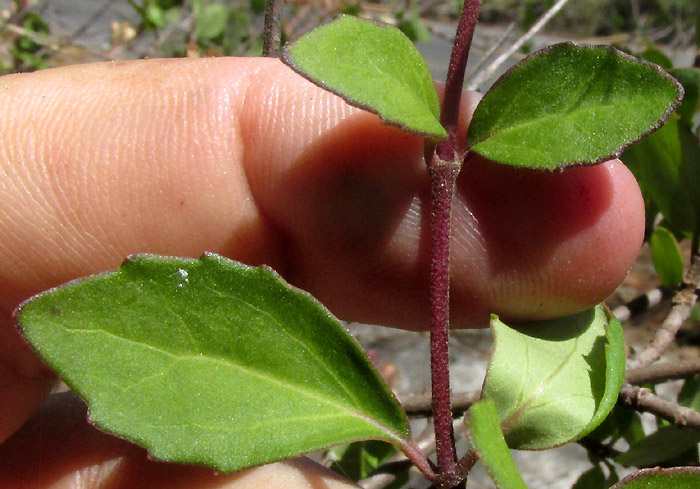
In stark contrast to the earlier plant, this individual's stems are conspicuously raspberry colored, and the leaves bear no white specks, leaving unsolved the question of what those speckles are. Some kind of scale insect? Something limestone dust does on moist leaves?